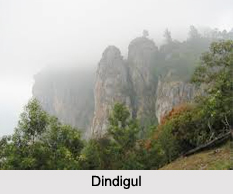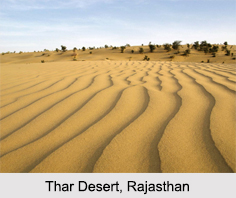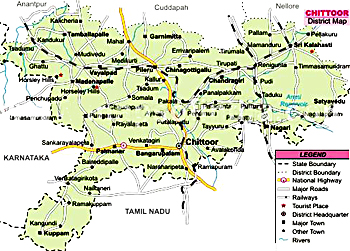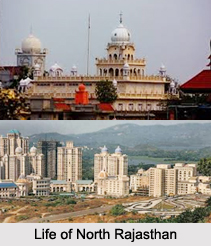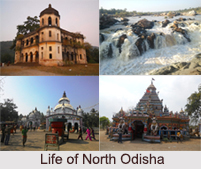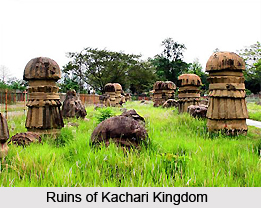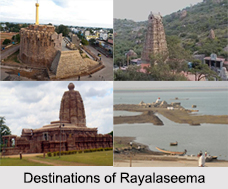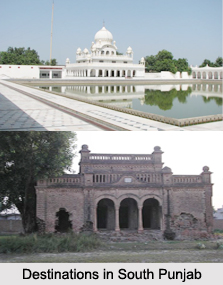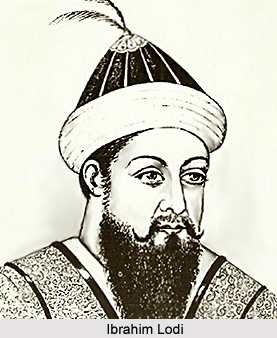 Decline of the Gupta period marked the downfall of the glorious history of Bihar. During the medieval period, Bihar lost its prestige as the political and cultural centre of India. Repeated attacks from invaders from different powerful dynasties led to inconsistency in the rule and administration of the state.
Decline of the Gupta period marked the downfall of the glorious history of Bihar. During the medieval period, Bihar lost its prestige as the political and cultural centre of India. Repeated attacks from invaders from different powerful dynasties led to inconsistency in the rule and administration of the state.
Ikhtiyaruddin Muhammad bin Bakhtiyar made repeated attacks against Bihar. After the fall of the Gahadwals, the central authority in Magadha collapsed. Various chiefs of Magadha thus began to fight amongst themselves for power. Bihar comprised of Rajmahal hills, the Ganges and the hilly tracts of Gaya district. The area from Rohtas to Kharagpur and Rajmahal were still under the Hindu rulers.
Muhammad Bakhtiyar attacked upon Bihar and captured the fortresses. He was accompanied by the Khiljis and Turks. Bakhtiyar next annexed South Bihar and captured the famous University town. The Buddhist Viharas were destroyed by the followers of the crescent and all the valuable books and manuscripts were burnt. In 1202 he left Bihar and marched on Nadia. His authority in Bihar was predominant along the Southern banks of the Ganga river right upto the Rajmahal hills. He also held the riverine tracts on the north bank of the Ganges from the mouth of the Gandak River to that of Kosi River. He organized his government on feudal lines and the country was divided among the army officers.
Slave Dynasty in Bihar
In 1206 Qutub- Ud- Din Aibak became the Sultan of Delhi. His dominion extended from Delhi to Bengal and Lahore to Kannauj and Gujrat. After the death of Qutubuddin, Hisamuddin-Iwaz asserted his independence in Bengal and assumed the title of Sultan Ghiyasuddin. Hisam exercised control over Bhagalpur District and re-annexed South Bihar. Later when Illtutmish ascended the throne, he conquered Magadha and established his authority there. In 1225 he conquered south Bihar from Hisam and placed it under his own Governor Mirza Jam, but he was defeated and killed by Illtutmish`s son Nasiruddin. Nasiruddin was appointed the governor of Lakhanauti in 1226 and in 1228 Alauddin Jani was made in charge of Lakhnauti. Illtutmish advanced into North Bihar and is said to have conquered Darbhanga.
At the beginning of Masud`s reign, Sanjar entitled Guraitkhan, having ensured the obedience of native landholders and invaded Bihar. He was however killed and thus Bihar became free from central control. During the time of Illtutmish, Tughral Tughan Khan was the governor of Bihar. He demanded the surrender of Lakhanauti from the Mamluk chief Aor Khan and led the Bihar army across the frontier to enforce his claim. A battle was fought and Aor Khan was killed. Tughan Khan became the master of Bengal and Bihar. After 1230 Lakhanauti and Khar became two separate provinces.
Tughlaq Dynasty in Bihar
The area of North Bihar, called Tirhut, extended up to Gorakhpur. It maintained its independence even when other parts were conquered by the Muslims. Firoz Shah Tughlaq undertook two expeditions to bring Bengal under control in 1354 and 1360 which proved to be unsuccessful. Though Bihar was under the suzerainty of Delhi Empire, Bengal remained independent till 1538. Towards the end of the 14th century, Khwaja Jehan of Jaunpur District was entrusted with the administration of the region between Kannauj and Bihar. He subjugated the fiefs of Bihar and Tirhut. He was also known as Malik-us-Sharq. In the fifteenth century, the Suryavamsi dynasty of Orissa under Kapilendra became very powerful. Kapilendra extended his sway up to Santhal Pargana, Hazaribagh and Ranchi. Magadha continued to be a part of Delhi Sultanate. Bihar was included in the Bengal Viceroyalty of Delhi kings until 132O A. D. when Ghiyas- ud- din Tughlaq again separated it. In 1397 it united with Sharqui kingdom of Jaunpur.
Lodi Dynasty in Bihar
Sharqui dynasty continued to rule when Bahlol Lodi established a new dynasty in Delhi. Hussain Shah of Jaunpur extended his authority upto the east. He made a truce with Bahlol Lodi and invaded Tirhut. His authority extended upto Bhagalpur. Hussain Shah was defeated by Bahlol Lodi, who seized Jaunpur from him. Hussain fled to Bihar and saved his dominion in Anga and Magadha. Bahlol was succeeded by Sikandar Lodi who deprived Hussain of Magadha. He annexed Bihar and ordered Ahmad Khan, son of Hussain Sharqui to realize tributes from the chieftains of Tirhut. Dariya Khan Lohani was entrusted with government of Bihar. Sikandar Lodi was succeeded by Ibrahim Lodi, who misbehaved with the Pathans and his policy alienated the nobles. They revolted against his authority under Dariya Khan Lohani and declared their independence.
Within two years of Nasrat Shah`s (1519-1532) accession, Lodi Empire began to decline. By 1522 the country from Jaunpur to Patna became independent and Lohani State was set up in Bihar. Nasrat Shah entered into an active alliance with eastern rebels and the common interests of security bound the new state of Bihar to Bengal. This friendship became a cardinal point in our foreign policy.
Hajipur became a strategic base and controlled all our river entrances. Across Gandak, the hold on Saran was widened. Rebel Afghan chiefs after Panipat flocked to the east and Bihar became the centre of resistance to the Mughals. Nasrat exerted to build up an Eastern Entente. In the meantime he realized the strength of the Mughal army and professed neutrality. By the death of Bahar Khan Lohani, the eastern confederacy was deprived of one of its best stalwarts. Nasrat Shah put the Raja of Tirhut to death and appointed Allauddin its governor and extended his kingdom across Gogra into the district of Azamgarh in Uttar Pradesh. His son-in-law Makhdum Alam was put in charge of the fortress of Hajipur.
During the early years of Muslim rule, the Provincial Governor resided at the town of Bihar-shariff. As a result of the confusions necessitated by the weak Lodi rule, Patna again became an important centre. Its situation made it very important from business and commercial standpoint. In the following centuries it again became the centre of political convulsions and reactions. The rise of Patna into prominence was marked by the Afgan revival under the leadership of Sher Shah Suri, who made it the headquarter of a small independent kingdom. Since then it has again played an important part in molding our history through different courses.







